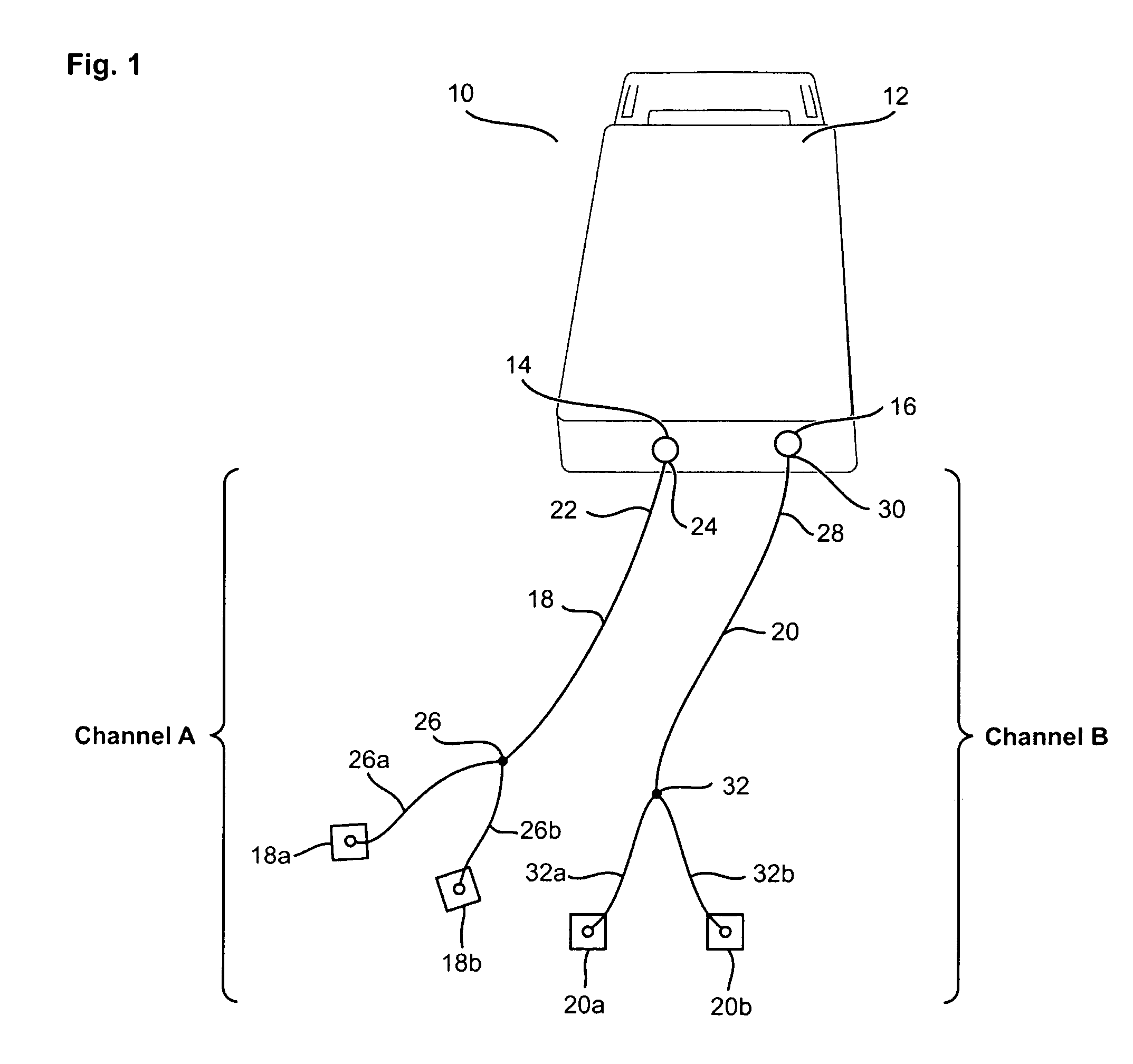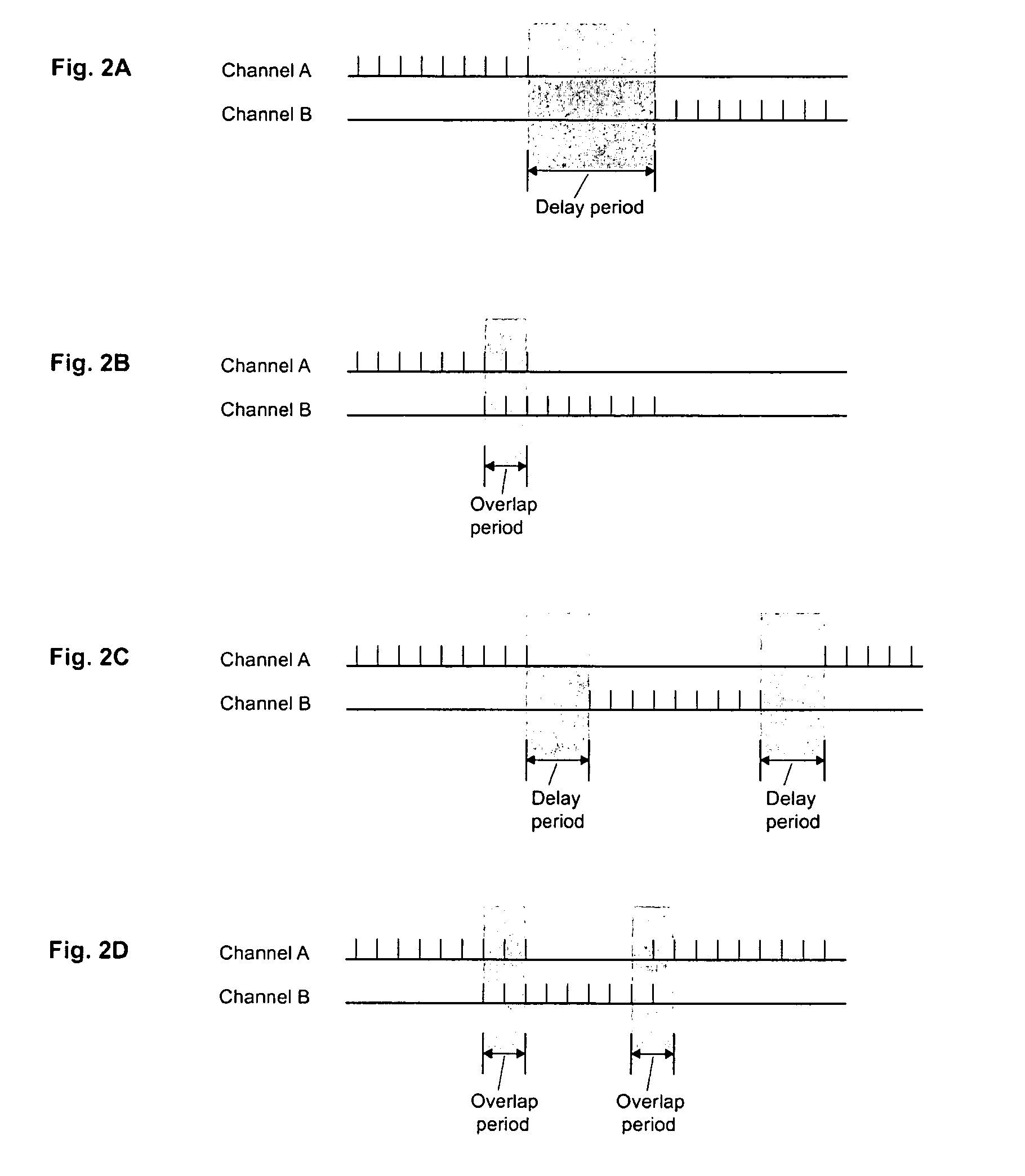Electrical stimulation device and method for the treatment of dysphagia
a dysphagia and electric stimulation technology, applied in electrotherapy, therapy, etc., can solve the problems of poor cheek tensile strength, ineffective tongue plunger action, and leakage of mouth contents, so as to improve treatment effect, and reduce overactive muscle tone and/or spasticity
- Summary
- Abstract
- Description
- Claims
- Application Information
AI Technical Summary
Benefits of technology
Problems solved by technology
Method used
Image
Examples
first exemplary embodiment
[0086]In a first exemplary embodiment of the present invention, as generally illustrated in FIG. 3A, a pair of electrodes is positioned in electrical contact with the patient's tissue in order to provide electrical stimulation to one or more of the face muscles used to create proper lip seal during swallowing and to the muscles associated with the posterior neck region. A second pair of electrodes is positioned bilaterally in a similar manner.
[0087]More specifically, as shown in FIG. 3A, a first electrode 18a is positioned in electrical contact with tissue to stimulate a motor point of the patient's buccinator muscle and / or orbicularis oris muscle. Most preferably, first electrode 18a comprises a surface electrode that is positioned on the patient's skin along the distal corner of the patient's mouth. A second electrode 18b is positioned is electrical contact with tissue to stimulate the patient's cervical paraspinal muscles. Most preferably, second electrode 18b comprises a surface...
second exemplary embodiment
[0098]In a second exemplary embodiment of the present invention, as generally illustrated in FIG. 3B, a pair of electrodes is positioned in electrical contact with the patient's tissue in order to provide electrical stimulation to one or more of the face muscles used to chew during swallowing and to the muscles associated with the posterior neck region. A second pair of electrodes is positioned bilaterally in a similar manner.
[0099]More specifically, as shown in FIG. 3B, a first electrode 18a is positioned in electrical contact with tissue to stimulate a motor point of the patient's masseter muscle and / or pterygoid muscle (medial and / or lateral). Most preferably, first electrode 18a comprises a surface electrode that is positioned on the patient's skin along the jaw about one inch anterior to the lower angle of the mandible at the prominence of the masseter muscle. A second electrode 18b is positioned is electrical contact with tissue to stimulate the patient's cervical paraspinal m...
third exemplary embodiment
[0110]In a third exemplary embodiment of the present invention, as generally illustrated in FIG. 3C, a probe is positioned in electrical contact with the patient's tissue in order to provide electrical stimulation to the tongue, which is used to move the bolus to the pharynx in preparation for swallowing and to the muscles associated with the posterior neck region. As can be seen, the probe (which is preferably used as a common ground) is placed on the tongue and other electrodes are positioned bilaterally along the posterior neck region of the patient.
[0111]More specifically, as shown in FIG. 3C, a first electrode 18a and a second electrode 20a are connected to the probe, which is positioned in electrical contact with tissue to stimulate a motor point of the patient's tongue muscle. Most preferably, the probe includes a conductive ball that is positioned on the patient's tongue about the midpoint. Other electrodes 18b and 20b are positioned bilaterally in electrical contact with ti...
PUM
 Login to View More
Login to View More Abstract
Description
Claims
Application Information
 Login to View More
Login to View More - R&D
- Intellectual Property
- Life Sciences
- Materials
- Tech Scout
- Unparalleled Data Quality
- Higher Quality Content
- 60% Fewer Hallucinations
Browse by: Latest US Patents, China's latest patents, Technical Efficacy Thesaurus, Application Domain, Technology Topic, Popular Technical Reports.
© 2025 PatSnap. All rights reserved.Legal|Privacy policy|Modern Slavery Act Transparency Statement|Sitemap|About US| Contact US: help@patsnap.com



